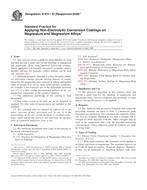1.1 These test methods cover the determination of the relative quantity of mixing water that will bleed from a sample of freshly mixed concrete. Two test methods, that differ primarily in the degree of vibration to which the concrete sample is subjected, are included.
1.2 The two test methods are not expected to yield the same test results when samples of concrete from the same batch are tested by each method. When various concretes are to be compared, all the tests must be conducted using the same method, and if the batches are of similar unit weight, the sample masses shall not differ by more than 1 kg [2 lb].
1.3 The values stated in either SI units or inch-pound units are to be regarded separately as standard. The values stated in each system may not be exact equivalents; therefore, each system shall be used independently of the other. Combining values from the two systems may result in non-conformance with the standard.
1.4 The text of this standard references notes and footnotes which provide explanatory material. These notes and footnotes (excluding those in tables and figures) shall not be considered as requirements of the standard.
1.5 This standard does not purport to address all of the safety concerns, if any, associated with its use. It is the responsibility of the user of this standard to establish appropriate safety and health practices and determine the applicability of regulatory limitations prior to use. (Warning–Fresh hydraulic cementitious mixtures are caustic and may cause chemical burns to skin and tissue upon prolonged exposure).
Product Details
- Published:
- 06/01/2009
- Number of Pages:
- 5
- File Size:
- 1 file , 320 KB
- Redline File Size:
- 2 files , 620 KB


